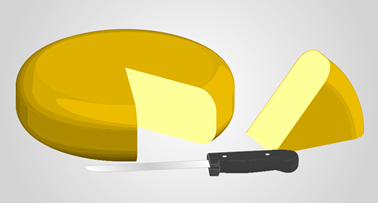by Ben Fuchs
If you love butter and cheese, you’re gonna love this! Recently a study was published in the respected British Medical Journal showing evidence that 60 years of government and medical convention that linked cardiovascular disease to fat consumption was based on bad science.
The article scientifically corroborated last years’ Time Magazine cover story on the failures of the so-called “Lipid Hypothesis” (lipid is the scientific designation for fat), which incorrectly blamed excessive consumption of dairy products, meat and other fatty foods for heart attacks. The article entitled Eat Butter admitted that after years of proclaiming fats as villains, it turns out, they may have been mistaken.
Now in fairness, Time Magazine and representatives of the medical model can be forgiven for their ignorance. Fats are confusing! There’s good fats, bad fats, shorts fat, long fats, saturated fats and unsaturated fats. Because of their tremendous diversity and functionality, no aspect of nutrition or diet is harder to understand than the chemistry of lipids.
Dietary and nutritional fats are called triglycerides. They’re composed of building blocks called “fatty acids” which come in three sizes: large, medium and small. While all three play an important role in keeping the body healthy, the effects of the short fats (or as they are more technically called, short chain fatty acids or SCFAs) are particularly significant, if unrecognized. These little molecular fatty structures play an especially huge role in the health of the intestine. Via this link, they have an effect on the whole body.
SCFAs are made in the large intestine by fiber munching bacteria which secrete the fatty molecules as a byproduct. SCFAs can also be ingested via the diet. From the intestine, these tiny lipids readily enter into blood circulation and travel throughout the body, eventually entering into the brain.
An increase in SCFA concentration in the blood is one of the main signals for appetite suppression. In essence, SCFAs biochemically curb the appetite and, in essence, represent a type of fat that helps you drop pounds. Eat butter, lose weight! While it may seem like fat is fat and it just sits around on our thighs or hips and does nothing, from a biological perspective, fats are quite active as messenger molecules, telling the body and brain what’s happening in the digestive system. They are signaling molecules. Once this is understood, it becomes clear why the outdated dietician and medical advice to avoid all fat is bad science and bad health advice.
Short fats can have brain health benefits too, especially when comes to calming things down. This fact explains the important link between the intestine and the brain, the so-called gut-brain axis, and its relationship to the development of schizophrenia, autism and mental health issues in general. Via this SCFA mechanism, the somewhat counter-intuitive notion (after all the intestine is located about as far away from the brain as you can get) that “what we eat affects how we think” can be explained.
All SCFAs have a calming effect, the most significant of which, as far as relaxation benefits are concerned, is called butyric acid: the chemical that gives butter its characteristic qualities and taste. The bacteria that produce butyric acid kick into high gear when food is scarce. Many researchers believe this is the mechanism behind the health benefits associate with fasting.
Butyric acid derivatives induced by caloric restriction may have a mitigating effect on pain and inflammation. That’s what scientists from Yale School of Medicine concluded in an article that was published in the journal Nature Medicine Even more significantly, the researchers found that these benefits may extend to health challenges like atherosclerosis, diabetes and dementia that are typically not associated with inflammatory pain.
All of this means that up-regulating butyric acid and increasing its levels in the blood can be one of the most important and effective of all dietary health strategies. Enjoying butter and cheese, nature’s richest sources of butyric acid is a good idea because butyric acid is produced by a reaction between fiber and microbes that live in the large intestine. You want to make sure you’ve got enough good bacteria and that you’re ingesting generous amounts of veggies, mushrooms and fruits. Get yourself on a good probiotic supplement, look for multiple strains of bacteria, use a daily dose of 10-50 billion units, and make sure you’re eating lots of fermented foods like sauerkraut, miso soup, fresh non-pasteurized kefir and yogurt.



